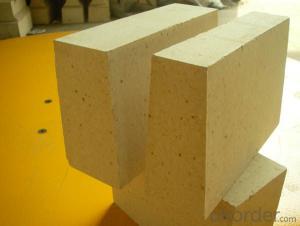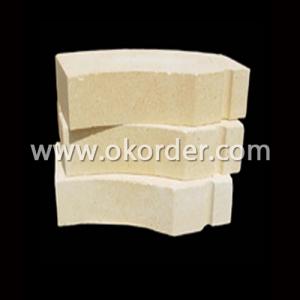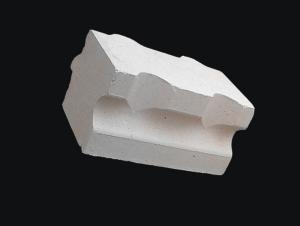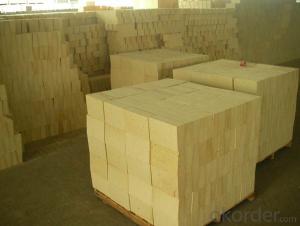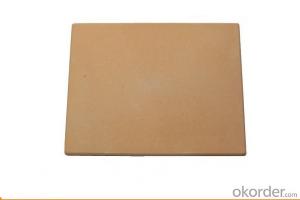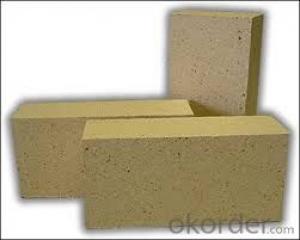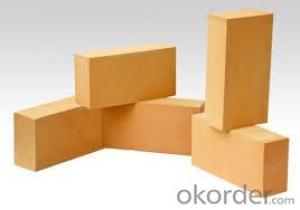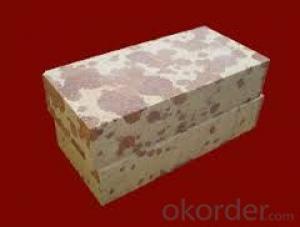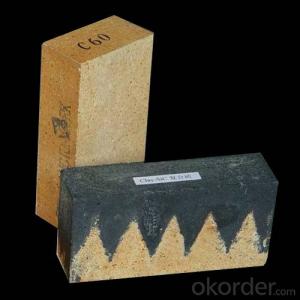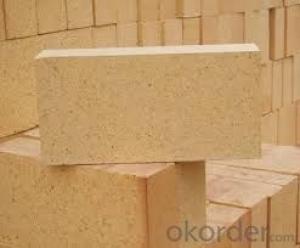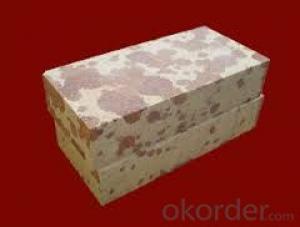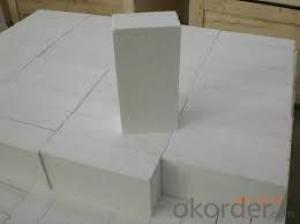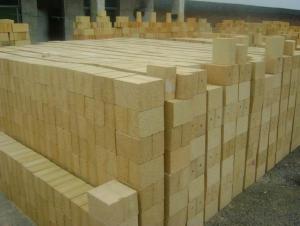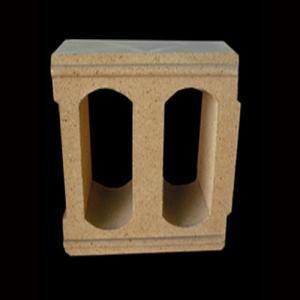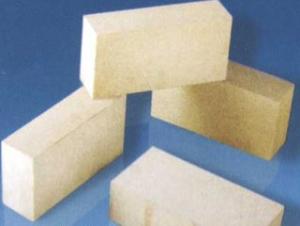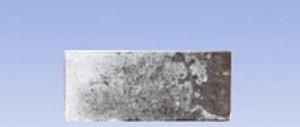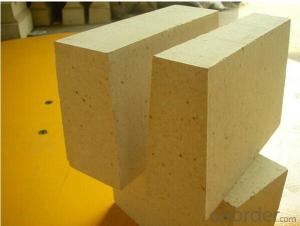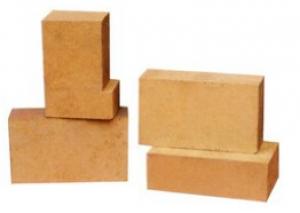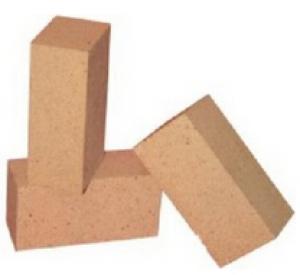High Alumina Lightweight Refractory Brick for Glass Melting Furnace
- Loading Port:
- Shanghai
- Payment Terms:
- TT OR LC
- Min Order Qty:
- 1 m.t.
- Supply Capability:
- 111 m.t./month
OKorder Service Pledge
OKorder Financial Service
You Might Also Like
Specifications
1. Low bulk density;
2.high cold crushing strength;
3. lowest thermal conductivity.
High alumina lightweight insulating refractory brick
Application
By using the products widely in insulating layers of various thermal equipments for example blast furnace, hot blast furnace, coke oven and linings where no high temperatures melt corrosion occurs.
Features:
Characterized by low bulk density, maximum service temperature is 1350C., high cold crushing strength, size precision and hold the most stable and lowest thermal conductivity of all insulating refractory bricks at present.
The total weight of the furnace body and walls thickness can be reduced effectively, thermal efficiency and working condition can be improved, energy consumption can be lowered, and productivity and significant economic results can be achieved.
High alumina lightweight insulating refractory brick is a kind of insulation material adopting organic matter as ignition loss substance in order to increase the porosity of refractory, which has such advantages as high porosity, small volume density, good insulation effect, high mechanical intensity, small thermal conductivity and long service life. For various industrial kilns & furnaces, it is a kind of essential refractory for energy saving and temperature preservation.
Composition
This series of High Alumina Insulating Refractory Brick are made of selected high alumina bauxite, kaolin clay, and hollow microsphere. By shaping at high pressure and sintering at high temperature
Physical and chemical index
Brand Inedx | HG-1.2 | LG-1.0 | LG-0.9 | LG-0.8 | LG-0.7 | LG-0.6 | LG-0.5 |
Al2O3,% | ≥48 | ||||||
Fe2O3,% | ≤2.0 | ||||||
Bulk Density ≤ | 1.2 | 1.0 | 0.9 | 0.8 | 0.7 | 0.6 | 0.5 |
Cold Crushing Strength ≥ | 5 | 3.92 | 3.43 | 2.94 | 2.45 | 1.96 | 1.47 |
(350°C)W/m.K Thermal Conductivity ≤ | 0.55 | 0.5 | 0.45 | 0.35 | 0.35 | 0.30 | 0.25 |
Temp reheating shrinkage less than 2.0% | 1400 | 1400 | 1400 | 1400 | 1350 | 1350 | 1250 |
- Q: What are the high aluminum bricks made of?
- We specialize in the production of various LeiBao refractory refractory material, such as corundum, zirconia products, alumina hollow ball products, mullite products and so on.
- Q: What is the heat preservation material used in a laboratory furnace?
- Asbestos, high alumina brick, or carbonized silicon are often used.Thermal insulation materials are generally used to guide heat coefficient less than or equal to 0.2 of the material. Thermal insulation material development is very fast, and in industry and building the use of good insulation technology and materials, often can get twice the result with half the effort. Each ton of mineral cotton insulation used in the building saves one ton of oil a year.
- Q: What is the price of the first grade high alumina brick?
- The specifications and different prices, relatively large fluctuations of the main push of the refractory Dongxin high alumina brick high alumina brick prices generally around 3000 have various levels of Dongxin refractories
- Q: What is the content of free silica in the refractory bricks of high alumina bricks?
- In the meantime, the free silica content of silicon brick is as high as 90% above. Therefore, the most serious damage is silicon brick, followed by clay brick, high alumina brick, magnesia brick and so on.
- Q: What are the characteristics of high alumina bricks?
- A neutral refractory with an alumina content of more than 48%. Made from alumina or other raw materials of high alumina content; formed and calcined.
- Q: What kinds of minerals are there in the five major categories of ore crystal chemistry?
- Halide. A few species, about 120 species, accounting for only 0.1% of the earth's crust. Most of them formed in the surface conditions, forming a salt mineral, containing less pigment ions, light color, low hardness, generally less than 3.5. Common mineral halite (NaCl), potassium (KCl), fluorite (CaF2) etc..
- Q: What is spalling resistant high alumina brick?
- Using bauxite as main raw materials, the introduction of a small amount of ZrO2 (ZrO2 is due to phase transition, between monoclinic and tetragonal type can improve the thermal stability of the products), adding a certain amount of binder and additives, the particle size distribution control mud, forming and sintering of refractory products produced, called anti stripping high alumina brick.
- Q: The difference between ordinary and diatomite brick refractory brick
- Insulation products made from diatomaceous brick and porous diatomite. The main raw material is natural porous diatomite, and then a small amount of clay and fuel are added. The volume density of diatomite brick was 0.7g/cm3, compressive strength at room temperature is 1 ~ 2MPa, the coefficient of thermal conductivity at 400 C for 0.13 ~ 0.20W/ (M - K), the apparent porosity is greater than 70%, the coefficient of thermal expansion (1280 degrees) 0.9 x 10 - 6 DEG -1, refractoriness is greater than 1250 DEG C. Mainly used in industrial kilns and other thermal equipment, thermal pipes insulation materials, generally withstand the hot surface temperature of about 1000 degrees celsius. Mainly used in industrial kilns and other thermal equipment, thermal pipes insulation materials, generally withstand the hot surface temperature of about 1000 degrees celsius.
- Q: The difference between light high alumina brick and heavy aluminum brick
- Lightweight high alumina brick, also called high alumina insulation brick. Alumina content of 48% or more, mainly from mullite and glass phase or corundum composition of lightweight refractory. Volume density 0.4 - 1.35g/cm3. Porosity 66% - 73%, compressive strength 1 - 8MPa. Better thermal shock resistance. Usually, a high alumina clinker is added with a small amount of clay. After grinding, it is poured and shaped in the form of slurry by gas generation or foam method, and it is fired at 1300 - 1500 DEG C. Sometimes industrial alumina can be used instead of some bauxite clinker. Used for lining and insulation of masonry kilns, as well as for areas where there is no strong, high temperature molten material erosion and erosion. When contacting the flame directly, the surface contact temperature shall not be higher than 1350 degrees centigrade.
- Q: How to test the aluminium bricks of high alumina refractory bricks?
- Forming high alumina brick will be tested on some professional equipment, it is suggested that you can go to the professional testing department to know about it!
Send your message to us
High Alumina Lightweight Refractory Brick for Glass Melting Furnace
- Loading Port:
- Shanghai
- Payment Terms:
- TT OR LC
- Min Order Qty:
- 1 m.t.
- Supply Capability:
- 111 m.t./month
OKorder Service Pledge
OKorder Financial Service
Similar products
Hot products
Hot Searches
Related keywords
